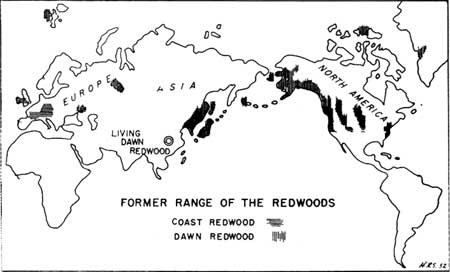
NPS Graphic These trees thrive in areas that get a lot of rain or moisture. During the Eocene, the ancient Redwoods were widespread across the Northern Hemisphere, which is the half of Earth above or north of the equator. Height Comparison:View the diagram below that shows the height differences between a 10-story building, Giant Sequoia and the modern coastal Redwood, which are more closely related to the Sequoia Affinis.
NPS / Astrid Garcia |
Last updated: December 18, 2020
